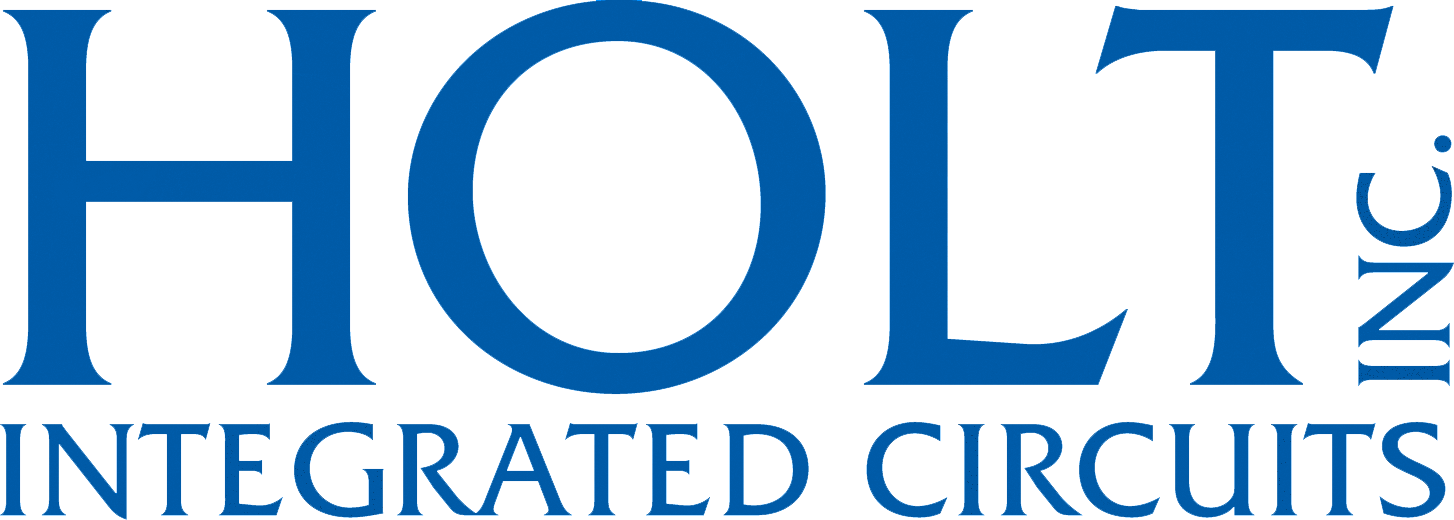Holt Integrated Circuits has the largest ARINC 429 IC product portfolio in existence today. Holt’s ARINC 429 ICs cover a whole range of complexity, from simple analogue bus interface chips such as line receivers and line drivers, to protocol ICs with on-chip FIFOs or RAM. Holt’s unique approach provides fully integrated solutions with both analogue transceivers and digital protocol on one chip. The latest line of ARINC 429 terminal ICs are designed to operate from a single 3.3V supply and incorporate a host Serial Peripheral Interface (SPI).
The HI-3220 from Holt Integrated Circuits is a family of single-chip CMOS high-density application data management ICs capable of managing, storing and forwarding avionics data messages between sixteen ARINC 429 receive channels and eight ARINC 429 transmit channels, making these devices ideal for data concentrator applications.
Holt's HI-3200 Protocol Bridge IC allows easy communication between ARINC 429 and ARINC 825 (CAN) buses. The HI-3200 can be programmed to automatically re-format, re-label, re-packetise and retransmit data from ARINC 429 receive buses to ARINC 429 transmit buses, as well as from ARINC 429 to ARINC 825 (CAN) or the other way around.
ARINC 429 Applications
- Guidance and Navigation Systems
- Flight Control
- Flight Data
- Communications
- In-Flight Entertainment Systems
Resources
| Device | Device Type |
Description |
Released | Datasheet |
|---|---|---|---|---|
|
HI-3220 |
ARINC 429 Data Management IC | ARINC 429 Data Management IC supporting 16 receive and 8 transmit buses. | 2018 |
View
|
|
HI-3200 |
Data Management / Protocol Bridge | Supports 8 ARINC 429 receive, 4 ARINC 429 transmit and one ARINC 825 (CAN) channels. Buses may be operated independently, or data may be stored or transferred between buses. | 2011 | View |
| ARINC 429 Data Management IC | ARINC 429 Data Management IC supporting 8 receive and 4 transmit buses. | 2011 | View |
What is ARINC-429?
Aeronautical Radio, Inc. (ARINC) was a privately held corporation started in 1929, ultimately acquired by Collins Aerospace in 2013. This corporation was founded by and comprised of various airlines and airline manufacturers (components and equipment) with the goal of producing sets of specifications (standards) for avionics hardware for global aircraft use. ARINC-429 is the standard for local area networks on commercial and transport aircraft. Communications, guidance, altitude, altitude reference, flight management, and more are all needed to work together to accomplish a successful flight. ARINC-429 was designed in the 1970’s to accomplish this goal.
ARINC-429 SPECIFICATION
The ARINC-429 technical specification, originally referred to as the Digital Information Transfer System (DTIS), was published in 1977 to define how avionics systems and components should communicate within commercial aircraft. The Mark 33 Digital Information Transfer System, as it is known today, is still the standard most commonly used by airlines. This specification is used to establish 429 bus communications for word structures, electrical characteristics and other protocols.
What is unique about ARINC 429 data transfer is its simple one directional flow of bus communications data. A typical data bus offers multidirectional data transfer between various bus points on a single set of wires. Not so with ARINC-429, but this is not taken as a disadvantage to the airlines as it has allowed for long-term operational cost savings and system reliability.
The ARINC-429 specification entails the following:
- Hardware consisting of only a single transmitter source supporting 1 to 20 receivers (also known as “sinks”) on a single wire pair.
- Data transmission is one directional. Additional busses are required for multidirectional data transfer.
- A data transmitter can only talk to a defined number of data receivers on a single bus on one wire pair.
- For multidirectional communication, 2 wire pairs are required for data transmission in opposite directions.
- Transmit and receive channels are different ports.
- Data words are 32 bits (most messages consist of a single data word) broken into 24-bits containing the core information and 8-bits acting as a data label describing the data transmitted.
- Messages are transmitted at either low speed (12.5 kbit/s) or high speed (100 kbit/s) to receiver components

